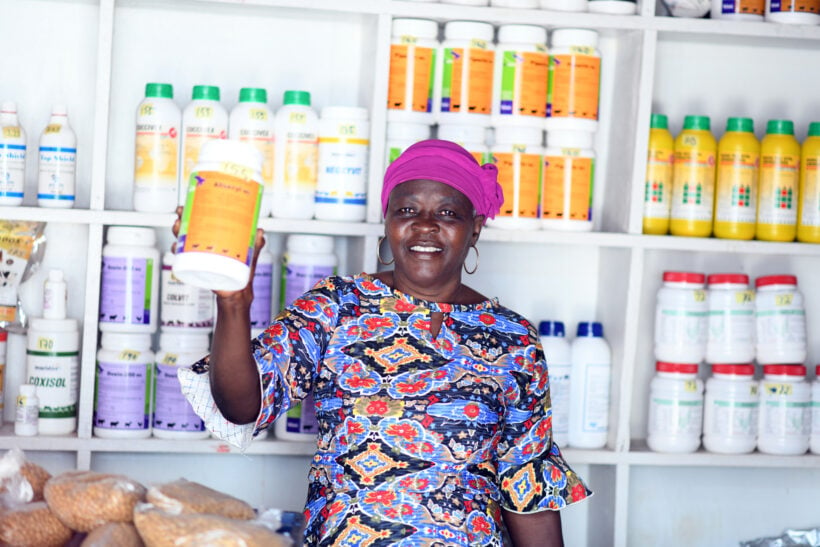
From backyard chicken raising to the grazing cattle of nomadic pastoralists, across much of rural Africa, animal diseases travel faster and wider than veterinary medicine.
An estimated 800 million people keep chickens, goats and cattle across the continent as valuable sources of food, income, fuel and fibre. Yet across Africa, the most prominent livestock diseases cost an estimated $9 billion every year – roughly 6% of the total value of the continent’s livestock sector.
Protecting and treating animals across such a vast and disparate population and geographic expanse is complicated and costly. Getting vaccines and medicine to livestock in remote areas of Africa is often limited by a lack of knowledge, manpower, funding and reliable refrigerated transport. Even when resources exist, they are typically spread too thin to systematically protect animal health and, by extension, the incomes of livestock keepers.
With a rapidly growing population and demand for animal-derived protein, enabling the veterinary sector to address the diverse needs and challenges of small-scale producers is not only possible, but also critical to Africa’s sustainable development.
Entrusted with the safeguarding of national herds, government veterinary services have historically focused on the most detrimental diseases affecting large-scale livestock operations, leaving many small-scale farmers behind.
Efforts in the past have successfully dealt with damaging infectious livestock diseases, including eradicating the deadly cattle disease rinderpest in 2011 through an integrated global campaign. Yet existing government-led efforts to manage other contagious livestock diseases are now lagging.
Facing rising economic pressures and a significantly broadened mandate, many African governments can no longer achieve sufficient vaccination coverage and deliver “last mile” services that saw volunteers across the continent contribute to rinderpest’s eradication even in the most remote communities.
Comprehensive livestock health management today requires governments and other livestock health organisations to think holistically and consider the infectious diseases limiting small-scale livestock producers’ potential. This includes foot and mouth disease, lumpy skin disease and contagious bovine pleuropneumonia (CBPP) in cattle, as well as peste des petits ruminants (PPR), sheep and goat pox and contagious caprine pleuropneumonia (CCPP) in sheep and goats.
Meanwhile, the global veterinary medicine industry has traditionally focused on addressing livestock health issues of the Global North, where the profitable markets justify the high cost of investments in research and development of new products.
Small-scale producers of large and small ruminants – cattle, sheep, and other grazing animals – in the Global South have not benefitted from such investment. A commercially viable market for ruminant vaccination does not currently exist. Where it does, it can be regularly undermined by free mass vaccination by governments, non-governmental organisations and development agencies. Simply put, there are not enough private veterinary vaccination efforts supporting small-scale livestock producers.
In recent years, the Global Alliance for Livestock Veterinary Medicines (GALVmed) and several private animal health companies have succeeded in developing and bringing to market a more complete portfolio of affordable animal vaccines and medicines for small-scale livestock producers in the Global South. Further, combined efforts in the poultry sector have demonstrated that governments and businesses sharing responsibility can foster a functioning veterinary service sector and vibrant, locally adapted veterinary medicine infrastructure and industry that caters to the specific needs of small-scale producers.
In practice, this means creating demand through increased awareness about livestock diseases while providing uninterrupted access to affordable veterinary products at the farm level. Adequately addressing the needs of the continent’s tens of millions of small-scale producers requires opening the ruminant vaccines market for private sector development, particularly for vaccine suppliers, local supply chain actors and private veterinary service providers.
Improving product registration and distribution will also help to equip farmers across Africa with the tools needed to preserve their animals’ health and support food security and economic growth on the continent, including their own.
Together with our partners, GALVmed has delivered more than 1.2 billion vaccines and other animal health products to farmers across Africa and South Asia, preventing the deaths of more than 23 million livestock – and the associated impacts this has on farmers’ incomes and food security.
Currently, GALVmed’s partners are developing a suite of combination vaccinations that address multiple infectious livestock diseases with a single intervention. These new vaccines promise to facilitate and improve vaccination access for farmers. Preventing multiple diseases at a lower cost will protect their livestock and livelihoods more completely and for the long term.
The vision of a food-secure, resilient African continent is well worth the efforts of removing the barriers to the functioning of the African small-scale livestock-producing sector. When governments, policymakers, veterinarians and veterinary medicine developers put the needs of small-scale producers first, they can help fill the gaps of the fragmented livestock health sector. Today, most tools are available but stakeholders will have to work together to deliver them to the farmers who need them most, for the benefit of Africa’s small-scale livestock-producing sector and society at large.

